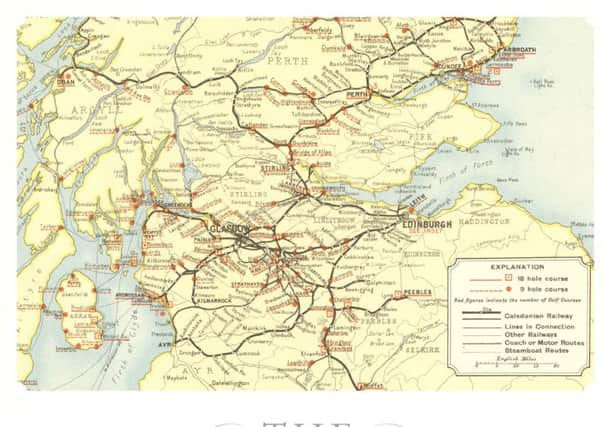How Scotland’s railways shaped the nation


They are lines on a map that mark out a separate domain. Britain’s railways, such a commonplace feature of the landscape, are also a different world whose unusual rituals and traditions border on those of a parallel universe. So it’s timely, with Scotland enjoying a so-called new “golden age” of rail, to recap on our rich rail heritage, understand how we got to where we are, and be guided through how we’re building on that for the future. Rail consultant David Spaven refers to being brought up in a “maps family”, and has an established pedigree in writing about rail cartography as co-author, with Julian Holland, of the GB-wide Mapping the Railways. His latest book, The Railway Atlas of Scotland, which is described as the first of its kind, brings the focus home, and with great flair. Its 181 maps look back at the network the country once enjoyed, some of the fanciful schemes it might have had, and the steady renaissance over the last 50 years since the savage cuts of the Beeching era.
The Railway Atlas of Scotland by David Spaven | Birlinn, 240pp, £30
Advertisement
Hide AdThe Waverley Route: Its Heritage and Revival by Ann Glen | Lily Publications, 144pp, £19.95
The Railways: Nation, Network and People by Simon Bradley | Profile Books, 646pp, £25
At its zenith, maps were a major propaganda weapon in the battle between rival railway companies, none more fierce than on cross-Border routes. An 1896 North British Railway map of Scotland depicted those in its domain as thick red lines, while relegating the rival Caledonian Railway’s west coast main line to, as Spaven puts it, “the thinnest of black lines”. A Caledonian Railway map of 1912, titled “The True Line and its Connections”, did precisely the opposite. Another map, from 1972, illustrates the extent of the British Rail empire prior to privatisation, with its Sealink ferry routes to Northern Ireland and the string of British Transport Hotels, including Gleneagles and the Old Course Hotel in St Andrews. However, the failed schemes which Spaven covers are even more intriguing than those that were built, such as a proposed “atmospheric” railway between between Edinburgh and Leith in 1846, where trains would have been sucked along by a vacuum tube, and a 1979 proposal to build a mountain railway up Ben Wyvis, near Dingwall, which got as far as being granted outline planning permission.
Elsewhere, there’s everything from an unrealised 1815 Robert Stevenson plan, complete with lighthouse stamp, for an Edinburgh-Dunbar coal line, to the re-built Borders Railway, which opened in September.
In covering that newest project, Ann Glen has proved herself to be no desk-bound writer. As well as being one of the only female railway historians in Scotland, Glen’s approach in The Waverley Route: Its Heritage and Revival, is very hands on, making 80 site visits as part of her research.
Unlike several other recent books on the line, Glen devotes more of her’s to the line’s history, with the final third chronicling the construction of today’s railway, principally through a series of vivid photographs, many of them her own. These show the sheer scale of railway building to restore a line even largely over its previous route. However, Glen also sets out the enormity of the original task, making the point that some 40 per cent of the cost of the initial Edinburgh and Hawick Railway went on compensating land and property owners alone.
Advertisement
Hide AdIn The Railways: Nation, Network and People, Simon Bradley entertainingly provides as much social history as industry detail to help today’s curious passenger make sense of their past and present “parallel universe”. Refreshingly, unlike some railway tomes, he doesn’t take his love for the subject too seriously, even referring to a Viz comic character that took the mickey out of trainspotters. This encyclopaedic book contains many Scottish references, such as Bradley’s description of single malts like Glenfiddich as “drinks of the railway age” because of the railways’ role in transporting whisky.
There are also many literary references such as in Dickens as well as mention of the less familiar Robert Louis Stevenson short story ‘The Rajah’s Diamond’, whose drama is played out on board a cross-Border sleeper train.
Advertisement
Hide AdBringing things right up to date is an instructive section on current trains, with Bradley starkly contrasting Virgin’s tilting west coast main line Pendolino, “whose interior seems to want to converge with the cramped and claustrophobic cabin of the airliner” with the “innovative world-class design, successful both technically and aesthetically” of the 1970s-designed “High Speed Train”, which is both still running on the East Coast Main Line and, remarkably, ScotRail’s choice to provide its inter-city services from 2018.